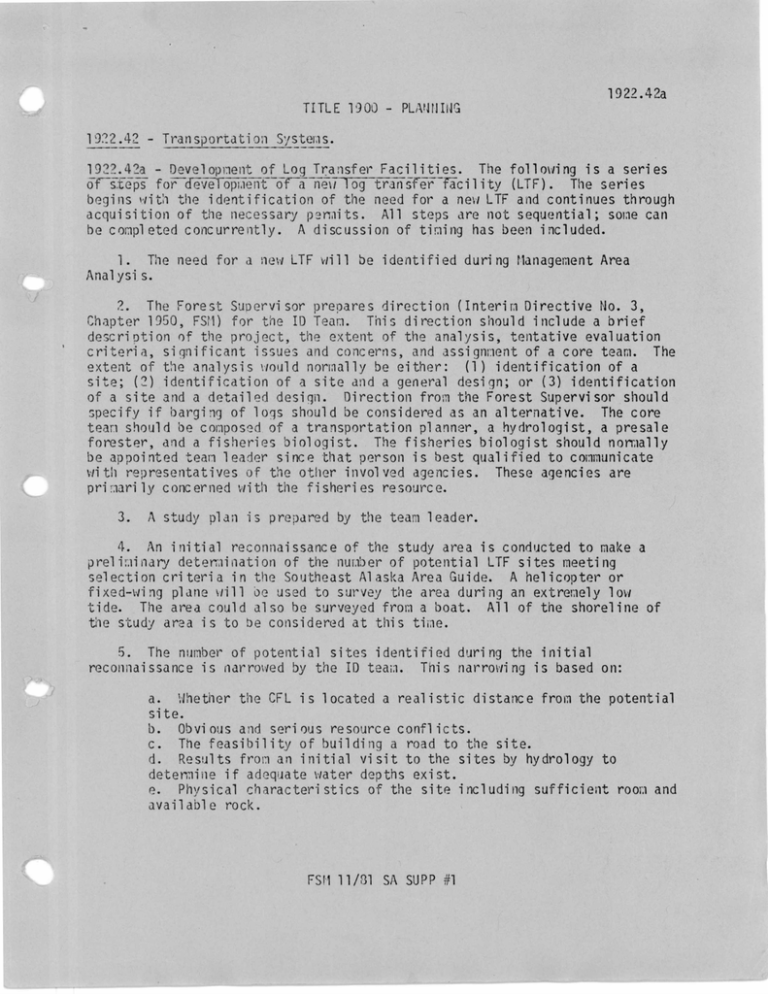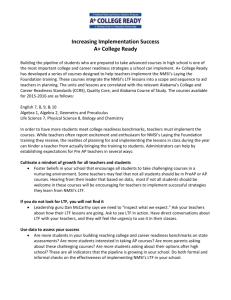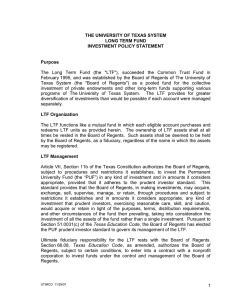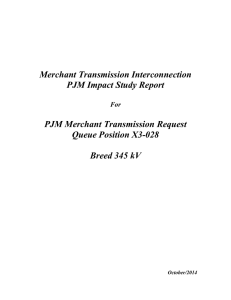1922.42a TITLE 1900 - PLANNING 1922.42 - Transportation Systems.
advertisement

1922.42a TITLE 1900 - PLANNING 1922.42 - Transportation Systems. 1922.42a - Development of Log Transfer Facilities. The following is a series for criiieTiont of neliT5Y—transfer fic i 1 i ty (LTF). The series begins with the identification of the need for a new LTF and continues through acquisition of the necessary permits. All steps are not sequential; some can be completed concurrently. A discussion of timing has been included. .5f —H4! 1. The need for a new LTF will be identified during Management Area Analysis. 2. The Forest Supervisor prepares direction (Interim Directive No. 3, Chapter 1950, FSM) for the ID Team. This direction should include a brief description of the project, the extent of the analysis, tentative evaluation criteria, significant issues and concerns, and assignment of a core team. The extent of the analysis would normally be either: (1) identification of a site; (2) identification of a site and a general design; or (3) identification of a site and a detailed design. Direction from the Forest Supervisor should specify if barging of logs should be considered as an alternative. The core team should be composed of a transportation planner, a hydrologist, a presale forester, and a fisheries biologist. The fisheries biologist should normally be appointed team leader since that person is best qualified to communicate wi th representatives of the other invol ved agencies. These agencies are primari ly concerned with the fisheries resource. 3. A study plan is prepared by the team leader. 4. An initial reconnaissance of the study area is conducted to make a preliminary determination of the number of potential LTF sites meeting selection criteria in the Southeast Al aska Area Guide. A helicopter or fixed-wing plane will be used to survey the area during an extremely low tide. The area could also be surveyed from a boat. All of the shoreline of the study area is to be considered at this time. 5. The number of potential sites identified during the initial reconnai ssance i s narrowed by the ID team. This narrowi ng i s based on: a. Whether the CFL is located a realistic distance from the potential site. b. Obvi ous and seri ous resource confl icts. c. The feasibility of building a road to the site. d. Results from an initial visit to the sites by hydrology to determine if adequate water depths exist. e. Physical characteristics of the site including sufficient room and available rock. FSH 11/31 SA SUPP #1 1922.42a--1 TITLE 1)0:) - PLANNING 6. The narrowed list of sites and the rationale used in the narrowing process is forwarded to the U.S. Fish and Uildlife Service (FUS), the National Marine Fisheries Service (N1FS): and the Alaska Department of Fish and Game. Since the Forest Service is not equipped to handle underwater surveys, the FWS and/or NHFS will be requested to determine (by scuba diving) the underwater biological characteristics of the narrowed list of sites. This information will be made available to the ID team. Hydrology will visit each site, and following detailed determinations of water depth, prepare bathymetric maps. 7. A preliminary scoping statement (PSS) is prepared by the Forest Supervisor (or appointed representative). The PSS must be reviewed by Staff and presented to the public. Presentation will normally be in the local newspapers. 3. The complete set of issues is developed by the team leader from response to the PSS. 1. Satellite members are appointed to the team in response to the complete set of issues. 10. The ID team determines if a field trip is desirable to collect additional data. Trip is completed, if necessary. 11. Specialist's reports are prepared indicating the favorable and unfavorable aspects of each alternative. 12. The ID team recommends an alternative. 13. A summary report or an Environmental Assessment (EA) is prepared by the team leader. Summary reports are prepared and the information incorporated into the tinber sale EA if both the LTF and timber sale analyses are proceeding concurrently. If the LTF analysis is substantially ahead or behind the timber sale EA, a separate EA is written. 14. Either the LTF or the timber sale EA is delivered to the Staff. Following review, the Forest Supervisor decides on a Forest Service preferred alternative. 15. Following preparation of the EA, the responsible official determines if the project will have a significant impact on the human environment. If not, a finding of no significant impact and a Decision Notice is prepared by the Forest Supervisor and presented to the public. If a significant impact will occur, an Environmental Impact Statement is prepared. FS1 11/31 SA SUPP #1 1922.4"!a--2 TITLE 1900 - PLANAIdG 16. Application is made to the State of Alaska for a lease of the tidelands and the Corps of Engineers for permits to construct the LTF. The lease and permits must be applied for after the responsible official decides on the Forest Service preferred alternative and consideration has been given to type of LTF to be constructed. The application must state the location and provide some details of toe design. 17. A letter is written to cooperating agencies explaining the rationale for the selected alternative and thanking them for their participation. An ideal progression of steps would be for the need of a new LTF to be identified during the spring of the first year. An ID team would be appointed, a study plan wri tten, the initial reconnaissance conducted, and the list of potential sites narrowed during the first field season. The narrowed list of sites would be delivered to the cooperating agencies for inclusion in their planning process for the following field season. The scoping process would be completed with the project presented to the public for comments. In the second year, the cooperating agencies and hydrology would complete their fieldwork and prepare their reports early in the field season. The ID team would use this information, collect additional data if necessary, and agree on a recd vended site. The sunmary or EA would he written during the late sumner or fall, and tne Forest Service preferred alternative would be identified. Applications would be made for the required lease and permits. The anount of time required for these applications depends upon the magnitude of the project. An estimate for obtaining the State tideland lease is 6 to 12 months. A maximum estimate for the Corps of Engineers permits is 6 to 7 months. Within the third year, permits would be obtained and construction could begin. The above sequence of steps for development of a new LTF indicates 3 years are required from the tine a need is identified until constriction could begin. This interval is variable depending upon how the sequence interfaces with other activities (scheduling of boat trips, budgeting and scheduling by cooperating agencies, length of tine to obtain permits, etc.). Also, it is anticipated a controversial LTF will require more tine than a routine one. FSr1 11/31 SA SUPP 41






